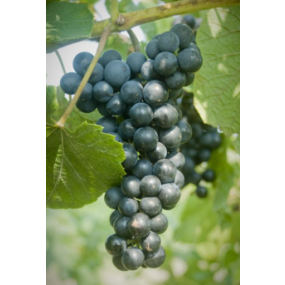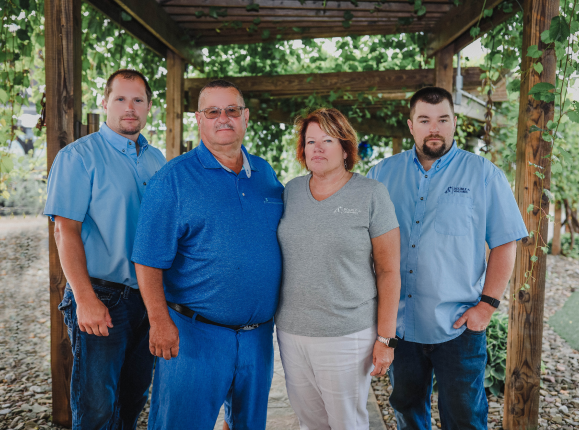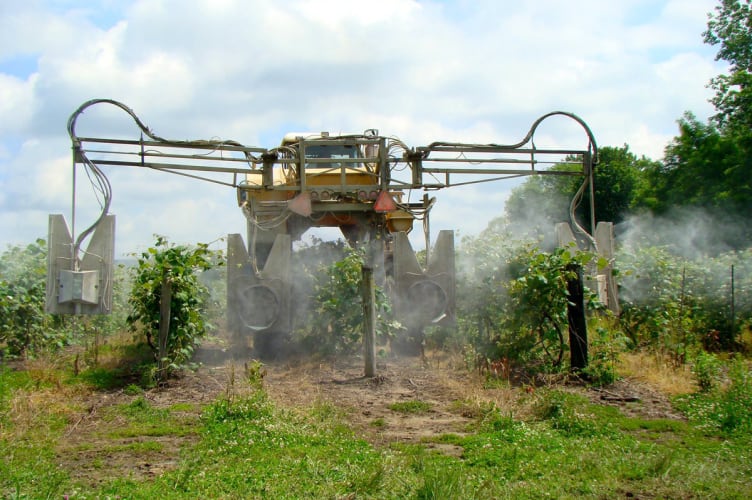Determining Grape Maturity and Deciding When to Harvest

Rick Dunst, Viticulturist, Double A Vineyards, Inc.
After nearly twelve months of taking care of your vineyards, the last decision you make can be the most agonizing and difficult– when is it time to harvest the fruit? As grapes mature, they develop aromas and flavors, and the chemical composition of the fruit changes. Knowing when those factors have reached optimum levels is both an art and a science, and the answer can be different for each variety you grow.
Let’s discuss the science first. As fruit matures, several indicators of ripeness can be measured. The most obvious is the sugar content of the fruit, measured as percent sugar or soluble solids and referred to as degrees brix. A relatively inexpensive refractometer can be used to measure brix in representative fruit samples or in the must. Juice with 21°-22° brix, if fermented dry, will yield a wine with typical alcohol content of about 12%. Many American grape varieties such as Concord, Niagara, and many more, are best harvested long before the fruit achieves anywhere near 22° brix to avoid the development of pronounced “foxy” flavors that most people consider undesirable. In this case, fruit can be harvested at less than 22° brix and chapitalized by adding sugar to reach the desired alcohol content. The variety Edelweiss is often harvested at 15°- 16° brix, and Cayuga White at 15° – 18° brix, even though the fruit will continue to gain sugar beyond that point. On the other hand, many vinifera and hybrid varieties continue to develop better flavors and aromas as they mature, and should be left to hang much longer. Red varieties will also develop more intense color and softer, more mature tannins.
Titratable acidity and pH are two other common measurements of fruit maturity. High acid, low pH fruit can make wines that are tart and acidic, while low acid, high pH fruit can make wines that are flat or flabby. High pH fruit (over pH 3.5 or so) can make wines that are biologically unstable and may be prone to oxidation. PH and acidity are determined with a pH meter, but obviously every home winemaker will not own one. If you are working with a winery, the winemaker will likely want to work with you in collecting samples and in determining the pH and acidity of the fruit to assist in determining when the fruit will be harvested.
As opposed to the technical measures of fruit maturity, observations in the vineyard can be just as important in determining optimum quality. For many varieties, the beginning of berry dehydration can indicate that harvest is near. Flavor profiles change as the fruit matures. In some cases, flavors keep developing long into the season, and fruit is left to hang as long as possible until cold weather, animal damage, brittle cluster stems, or berry splitting dictates the time of harvest. However, in other cases, flavors “peak” and further maturity is undesirable. Native American varieties in particular can begin to develop undesirable flavors. Varieties with muscat parentage tend to reach a peak of desirable flavors which then decrease with further maturity. Frequent sampling and tasting in the vineyard (and experience) can help you recognize the best time to harvest each of the varieties you grow in order to achieve optimum wine quality.
For a more complete discussion of this topic, and additional references, consult “Wine Grape Quality: When is it Time to Pick” by W. Gill Giese in Wine Grape Production Guide for Eastern North America, edited by Tony Wolfe, a must-read book for anyone serious about growing grapes and making fine wine.














